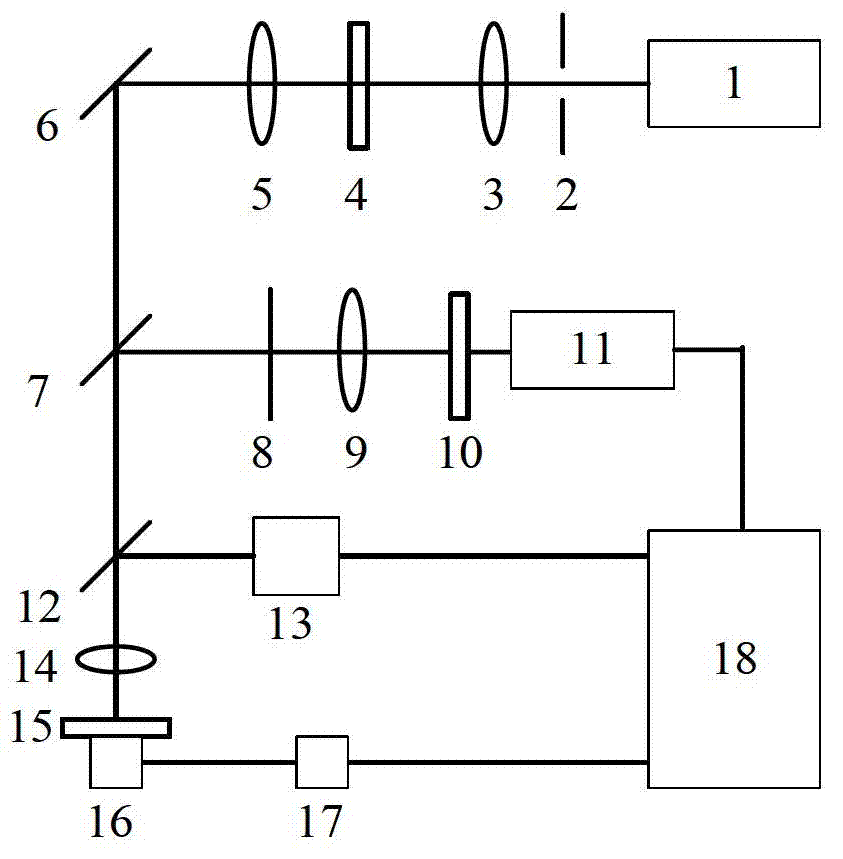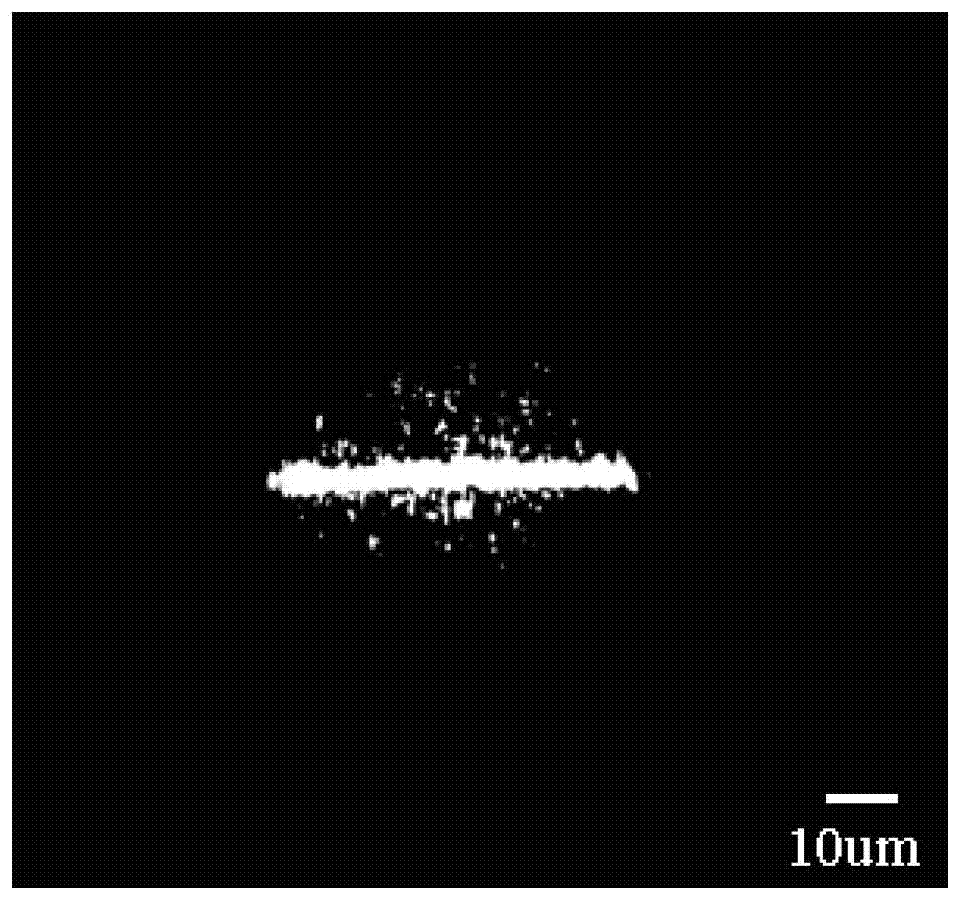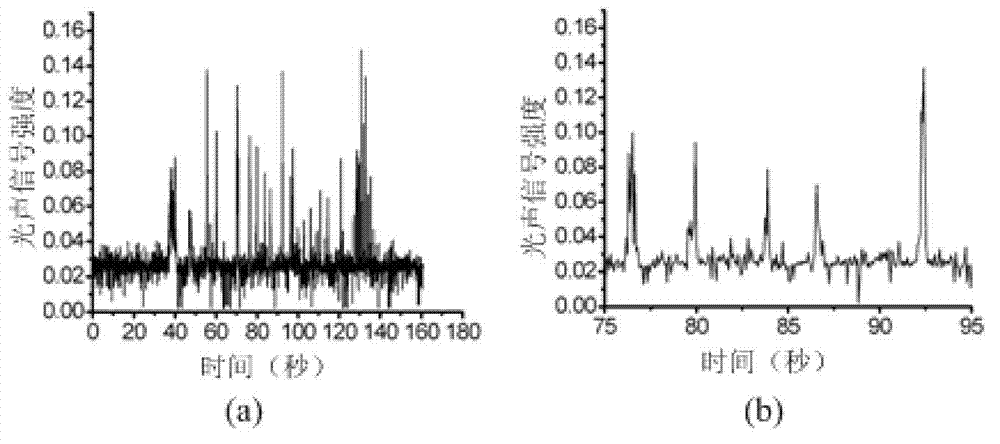Photoacoustic-fluorescence flow cytometer
A flow cytometer and fluorescence technology, used in fluorescence/phosphorescence, instruments, scientific instruments, etc., can solve the problems of missed detection, inability to detect dark matter, inability to detect fluorescence, etc., to eliminate non-confocal signals and improve system detection. The effect of sensitivity
- Summary
- Abstract
- Description
- Claims
- Application Information
AI Technical Summary
Problems solved by technology
Method used
Image
Examples
Embodiment 1
[0043] A photoacoustic-fluorescence flow cytometer, such as figure 1 As shown, it includes an optical excitation system, a fluorescent signal receiving system, a photoacoustic signal receiving system, a sample stage and a computer display control system; the optical excitation system is respectively connected with the fluorescence signal receiving system, the sample stage, and a computer display control system The system is respectively connected with the sample stage and the computer display control system, and the fluorescent signal receiving system is connected with the computer display control system; the computer display control system is electrically connected with the optical excitation system, the fluorescent signal receiving system, and the photoacoustic signal receiving system;
[0044] Described optical excitation system comprises excitation light source 1, diaphragm 2, cylindrical lens 3, slit A4, achromatic lens A5, reflecting mirror 6, dichroic beam splitter A12 a...
Embodiment 2
[0052] The method for detecting the number of cells using the photoacoustic-fluorescence flow cytometer of Example 1 comprises the following steps:
[0053] (1) Place the rhodamine sample in the center of the sample stage, place the microscopic objective lens directly above the sample stage, place the focused ultrasonic detector directly below the sample stage, and place the photomultiplier tube on the obliquely above the microscopic objective lens for the fluorescent light output At the mouth, the outside of the photomultiplier tube is closed with a black box;
[0054] (2) Start the photoacoustic-fluorescence flow cytometer, using a titanium sapphire pulsed laser as the excitation light source, the output laser wavelength is 532nm, the pulse width is 10ns, and the repetition frequency is 15Hz; the pulsed laser generated by the above laser is passed through the cylindrical lens After focusing to form a line spot, and then passing through the slit A, the achromatic lens A, refl...
Embodiment 3
[0062] The method for detecting the number of cells using the photoacoustic-fluorescence flow cytometer of Example 1 comprises the following steps:
[0063] (1) Place the ear blood vessels of the mouse in the center of the sample stage; place the microscope objective directly above the sample stage, place the focused ultrasound detector directly below the sample stage, and place the photomultiplier tube on the fluorescent light obliquely above the microscope objective. At the light outlet, the outside of the photomultiplier tube is closed with a black box;
[0064] (2) Start the photoacoustic-fluorescence flow cytometer, using a titanium sapphire pulsed laser as the excitation light source, the output laser wavelength is 532nm, the pulse width is 10ns, and the repetition frequency is 15Hz; the pulsed laser generated by the above laser is passed through the cylindrical lens After focusing to form a linear spot, and then passing through the slit A, the achromatic lens A, reflect...
PUM
| Property | Measurement | Unit |
|---|---|---|
| Excitation wavelength | aaaaa | aaaaa |
| Pulse width | aaaaa | aaaaa |
| Excitation wavelength | aaaaa | aaaaa |
Abstract
Description
Claims
Application Information
 Login to View More
Login to View More - R&D
- Intellectual Property
- Life Sciences
- Materials
- Tech Scout
- Unparalleled Data Quality
- Higher Quality Content
- 60% Fewer Hallucinations
Browse by: Latest US Patents, China's latest patents, Technical Efficacy Thesaurus, Application Domain, Technology Topic, Popular Technical Reports.
© 2025 PatSnap. All rights reserved.Legal|Privacy policy|Modern Slavery Act Transparency Statement|Sitemap|About US| Contact US: help@patsnap.com



